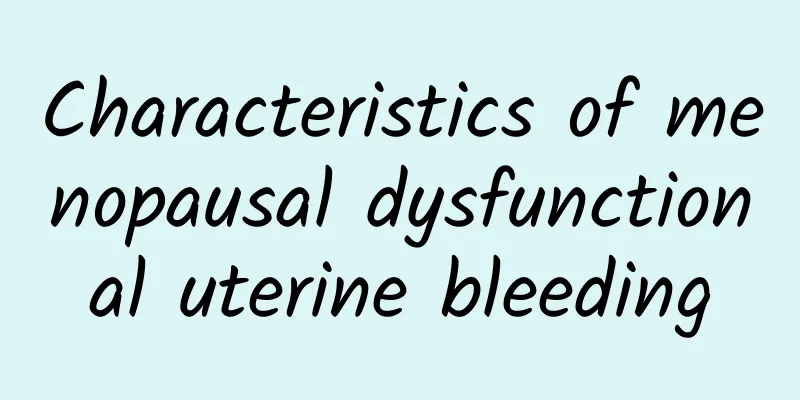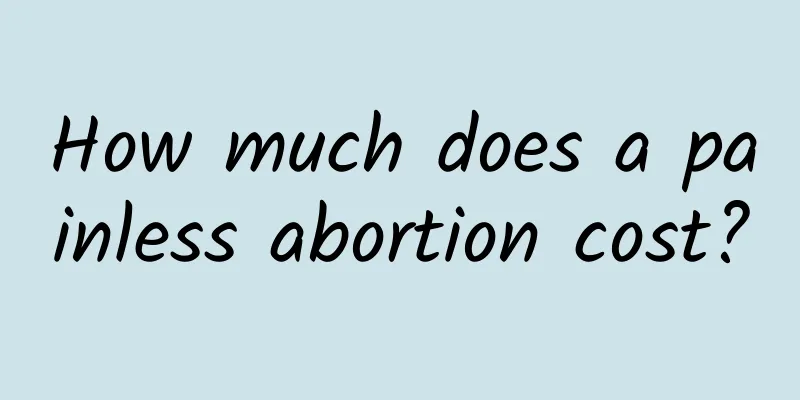Characteristics of menopausal dysfunctional uterine bleeding

|
Menopausal functional uterine bleeding is caused by endocrine disorders, so before diagnosis, a comprehensive physical examination must be performed to exclude uterine bleeding caused by pregnancy, tumors, inflammation, trauma, etc., and then it can be diagnosed as functional uterine bleeding (abbreviated as functional uterine bleeding). The main characteristics of menopausal functional uterine bleeding are: (1) The cause of the disease is the decline of gonadal function. Menopausal functional uterine bleeding occurs when the reproductive function gradually tends to age. During the transition period, the aging speed of various organs and systems is different, especially the aging of various planes of the gonadal axis is not synchronized, which can easily lead to functional disorders and cause menopausal functional uterine bleeding. (2) Clinical symptoms vary. Irregular menstrual cycle, irregular uterine bleeding, excessive menstrual flow, bleeding in the middle of the menstrual cycle, bleeding before menstruation, bleeding after menstruation, or long and continuous menstrual period, etc. Excessive bleeding or prolonged bleeding is often accompanied by varying degrees of anemia, or symptoms such as dizziness, fatigue, palpitations, tinnitus, edema, etc. caused by anemia. (3) Different changes in the endometrium. The endometrial tissue examination of menopausal functional uterine bleeding with anovulation can be divided into simple endometrial hyperplasia, adenocystic hyperplasia, adenomatous hyperplasia and atypical hyperplasia. Atypical hyperplasia should be considered a precancerous lesion, and the principle of treatment is hysterectomy for safety. If the endometrial changes in postmenopausal uterine bleeding are manifested as atrophy, there are also two manifestations and they are related to whether ovulation occurred in the last menstrual cycle. If ovulation occurred in the last menstrual cycle, the endometrium will show simple atrophy. If there was no ovulation in the last menstrual cycle, the endometrium will show cystic atrophy. (4) There is no need to induce ovulation in treatment. Dysfunctional uterine bleeding during menopause is caused by the decline of ovarian function and the cessation of ovulation. This is a natural physiological change. Therefore, the treatment is to stop bleeding first, and there is no need to induce ovulation. The main means of stopping bleeding is curettage, which can not only assist in diagnosis, but also remove necrotic endometrium and blood clots in the uterine cavity to achieve hemostasis. |
<<: How to treat postpartum amenorrhea
>>: The main symptom of cervicitis is increased vaginal discharge.
Recommend
What are the specific methods for treating ectopic pregnancy?
What are the specific methods for treating ectopi...
Water lotus is high in fiber, low in calories and can prevent cancer? Nutritionist Zhao Hanying: The golden ratio of calcium and magnesium is a great sleep aid
99.9% of Taiwan's "water lotus" com...
Why can't women's cervical erosion be cured for a long time? There are three factors to consider when women's cervical erosion cannot be cured.
Doctors remind women that they should not have se...
The right ovarian cyst is 3.7, how to treat it?
Generally speaking, if the ovarian cyst is smalle...
To lose weight, you need to supplement with high-quality protein! Mexican-style salad without gaining weight
If you want to have beautiful curves, it is very ...
Super fasting ~ lose 3 kg in 1 month
To maintain a slim body, take a look at what’s po...
How much does artificial abortion cost
The cost of an abortion ranges from a few hundred...
What are the hazards of uterine fluid accumulation in women
Uterine effusion is an uncommon disease, also kno...
How to treat adnexal cysts after menopause
How to treat adnexal cysts after menopause? There...
Menstrual period is an important period for the onset of pelvic inflammatory disease
Through understanding the causes of pelvic inflam...
What to eat for cervical erosion
Poor diet is a major factor leading to cervical e...
Will I have dysmenorrhea after uterine fibroid surgery? What should I do if I have dysmenorrhea after uterine fibroid surgery?
Women experience pain in the abdomen and waist be...
Paying attention to details in life can reduce the chance of vaginitis
Nowadays, many women suffer from vaginitis, which...
What are the symptoms of uterine fibroids? Can uterine fibroids cause urinary difficulties?
What are the common symptoms of uterine fibroids?...
What should I check for cervicitis?
After suffering from cervicitis, what are the gen...









